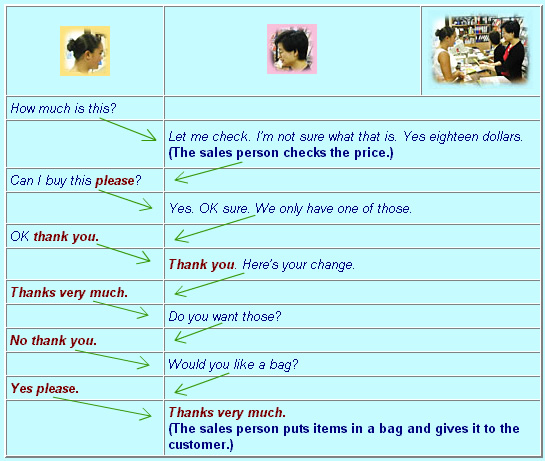Communicative functions: Interacting with others
| Using formulaic expressions |
Offering thanks, good wishes, congratulations, concern and sympathy
When we interact with others, we are building a relationship with them. There are different kinds of relationships, for example, a relationship between friends, a relationship between a customer and a sales person, a relationship between family members.
We use many expressions to help build relationships with people. These include the following:
| expressions of thanks: | please thanks thank you thank you very much |
| good wishes: | Good luck! Best of luck! Best wishes! |
| congratulations: | Congratulations! Well done! |
| concern: | Oh no! How terrible! You poor thing! I'm so sorry. |
In this example from a shopping interaction, the sales person and the customer use a range of expressions for saying please and thank you:

Teaching activities |
|
For PrimeTeach teaching activities which provide KS2 students
with practice in using formulaic expressions to show concern, see:
|
|
||
To give us feedback about this section, click here or on the Comment button at the top of the screen.
If you have any questions about this section, visit the Language Corner.
If you have any questions or suggestions about how to teach this section, send a message to the Teaching Corner.